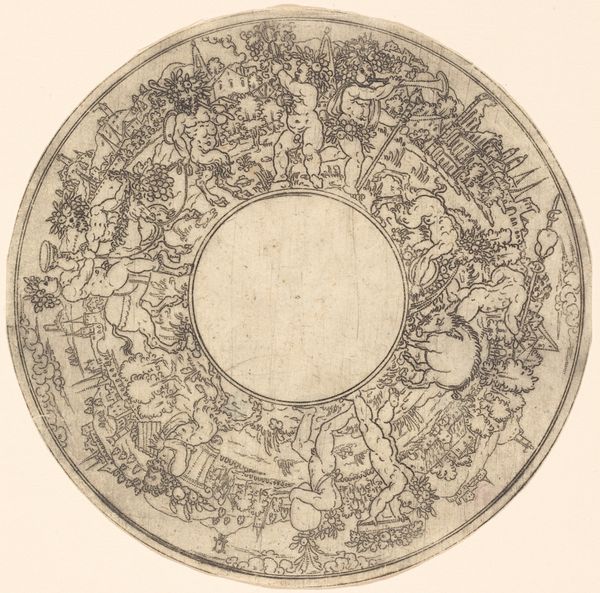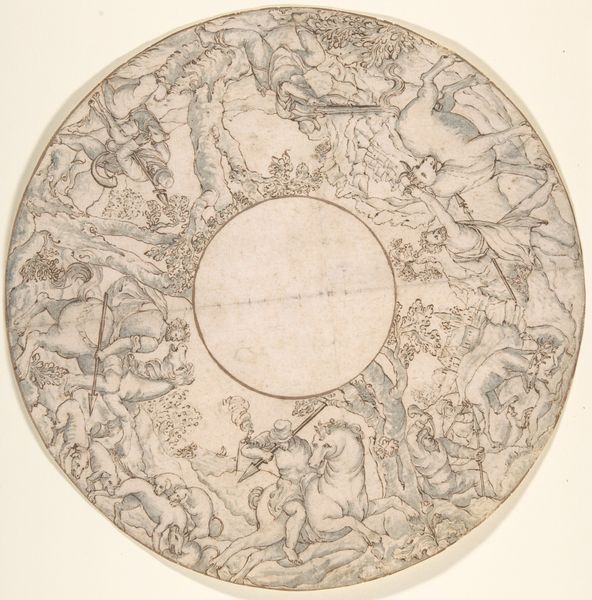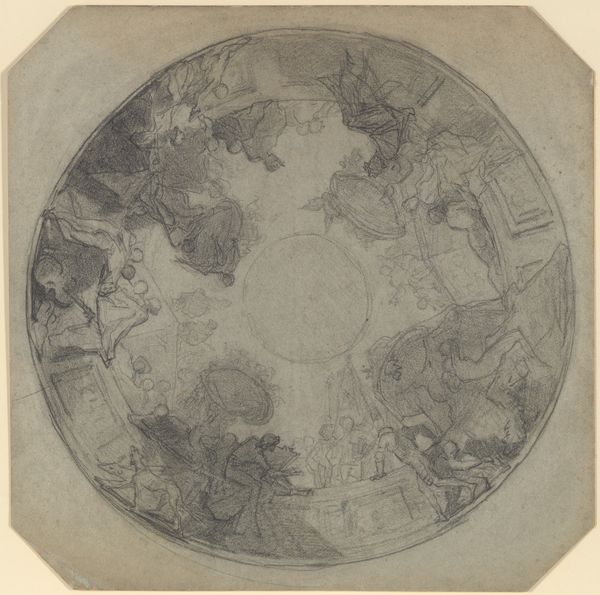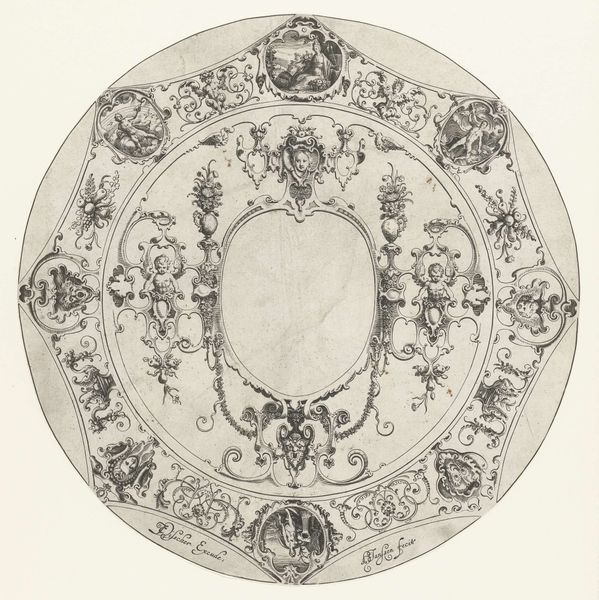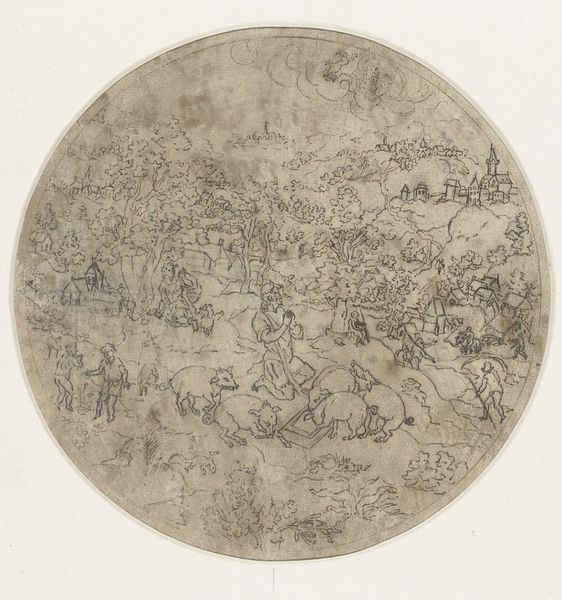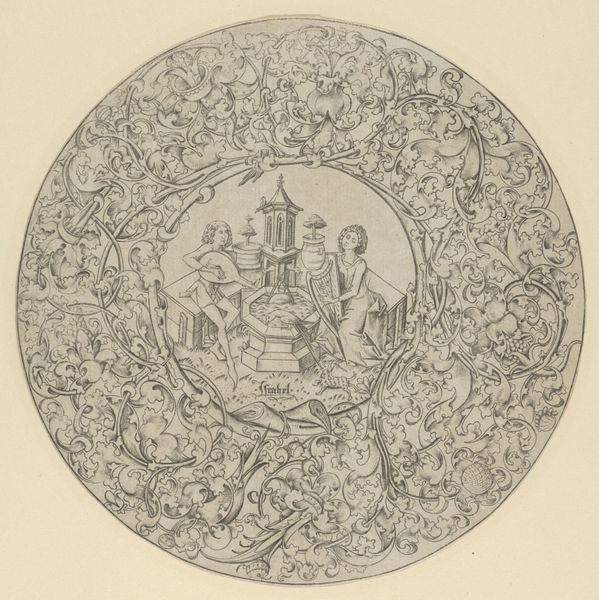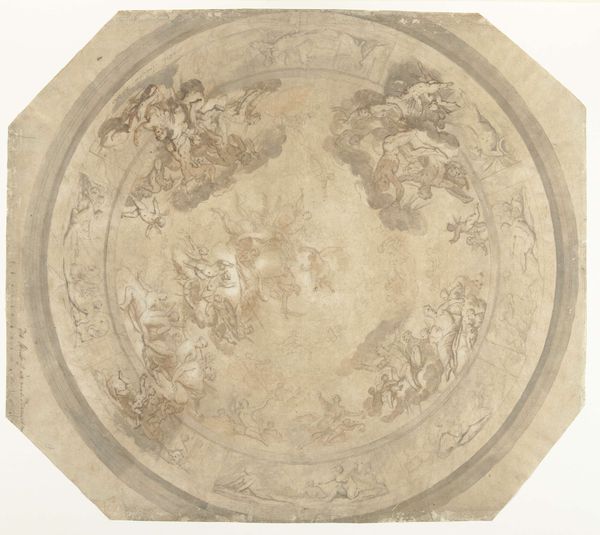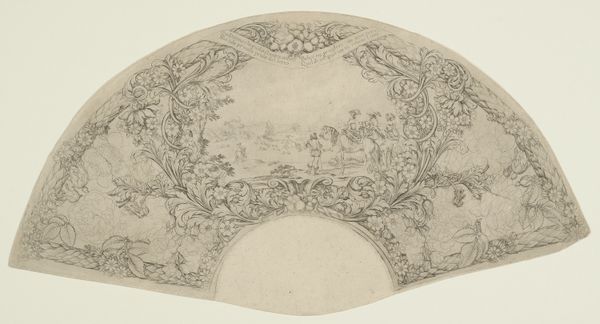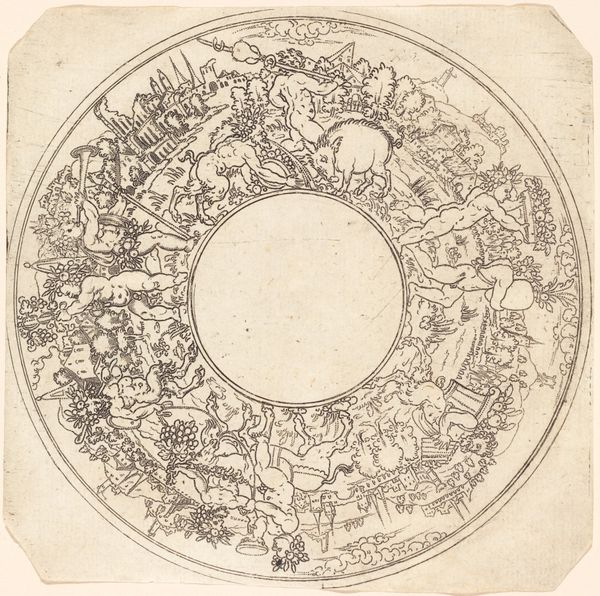
print, engraving
# print
#
mannerism
#
figuration
#
line
#
history-painting
#
engraving
Copyright: Rijks Museum: Open Domain
Curator: What a fascinating object. We're looking at "Schotel met Bacchus," a print made sometime between 1572 and 1582. It's an engraving, giving it that very fine, linear quality. Editor: My first impression? Organized chaos! There's so much happening within that circular frame, a real frenzy of figures. Curator: Exactly! The piece embodies the Mannerist style, known for its crowded compositions and elongated, theatrical figures. The central theme, Bacchus, God of Wine, unleashes the kind of hedonistic energy that defines so many rituals in art. Editor: Looking closer, you can trace the evolution of power through image-making, since engravings democratized images to a wider, less privileged audience. The political elite could not dictate consumption as easily, perhaps fostering free interpretations of Bacchus himself, his followers, the social world depicted around him. Curator: Very insightful. Bacchus wasn't just about drunken revelry; he was also a symbol of liberation, ecstasy, and the blurring of boundaries. This "dish" presents a world where inhibitions are cast aside. I see a yearning for transformation and communal release. The wreath around Bacchus reminds the mind that he is to be both honored and revered. Editor: Yes, and remember who commissioned and consumed images like these! It would be telling to better understand this engraving’s socio-cultural function among collectors and print rooms. There were many “circles” with enough wealth and resources to want to see and imagine a Bacchanalia scene on display. Curator: Precisely! So this seemingly straightforward scene opens onto layers of understanding concerning religion, ritual, liberation and cultural expression. I find it so interesting how one image can contain so many possible interpretations. Editor: Absolutely. Images shape cultural memory, how societies perceive themselves. Understanding their historical context and continuing resonance offers a potent reminder of the ties that bind us together. It highlights both shared narratives, and ever-present differences.
Comments
No comments
Be the first to comment and join the conversation on the ultimate creative platform.
